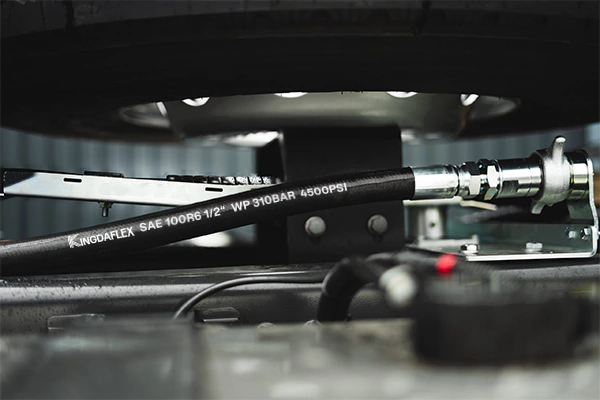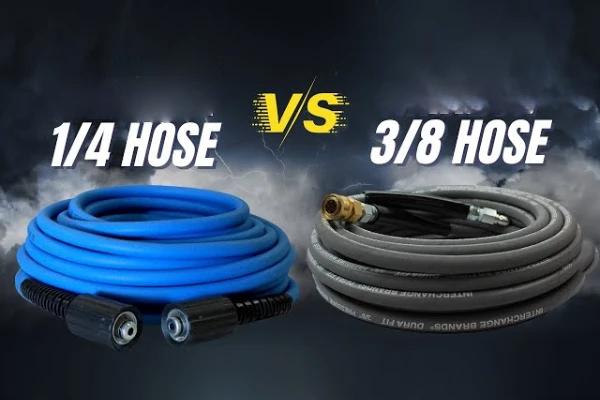Hydraulic hoses are essential components in various industrial and mechanical applications. They are responsible for transporting hydraulic fluid under high pressure and powering machinery and equipment. However, excessive pressure can lead to premature wear and tear, leaks, and even catastrophic failures.
In this blog post, we will explore effective strategies to release pressure on hydraulic hoses. We will discuss the causes of excessive pressure, the potential consequences, and practical solutions to prevent damage and ensure the longevity of your hydraulic system.
By understanding these methods, you can significantly improve the performance and reliability of your equipment.
Why Release Hydraulic Pressure?

Releasing hydraulic pressure is essential for safety and proper maintenance. Hydraulic systems store high-pressure fluid that can cause serious injury or equipment damage if not properly relieved. Understanding when and how to release pressure ensures safe operations, protects personnel, and prolongs the life of hydraulic components.
- Prevent Accidents: Releasing pressure prevents sudden fluid ejection. We emphasize safety by ensuring operators relieve pressure before maintenance, protecting against burns, cuts, or impact injuries caused by uncontrolled high-pressure fluid release.
- Protect Equipment: Stored pressure can damage hoses, fittings, and valves. We recommend depressurizing systems to avoid equipment failure, leaks, or rupture, ensuring hydraulic machinery remains functional and reliable during maintenance or inspection.
- Facilitate Maintenance: Proper pressure release simplifies hose or component replacement. We ensure hydraulic systems are safe to work on, making maintenance tasks easier and reducing the risk of errors or damage during servicing.
- Reduce Wear and Tear: Constant pressurization stresses hydraulic components. We advise releasing pressure regularly to minimize fatigue on hoses, seals, and valves, extending their lifespan and maintaining system efficiency over time.
- Prevent Fluid Loss: Releasing pressure carefully avoids uncontrolled fluid discharge. We guide proper procedures to contain hydraulic fluid, maintaining system cleanliness and reducing environmental hazards associated with spills or leaks.
How Temperature Affects Hydraulic Line Pressure
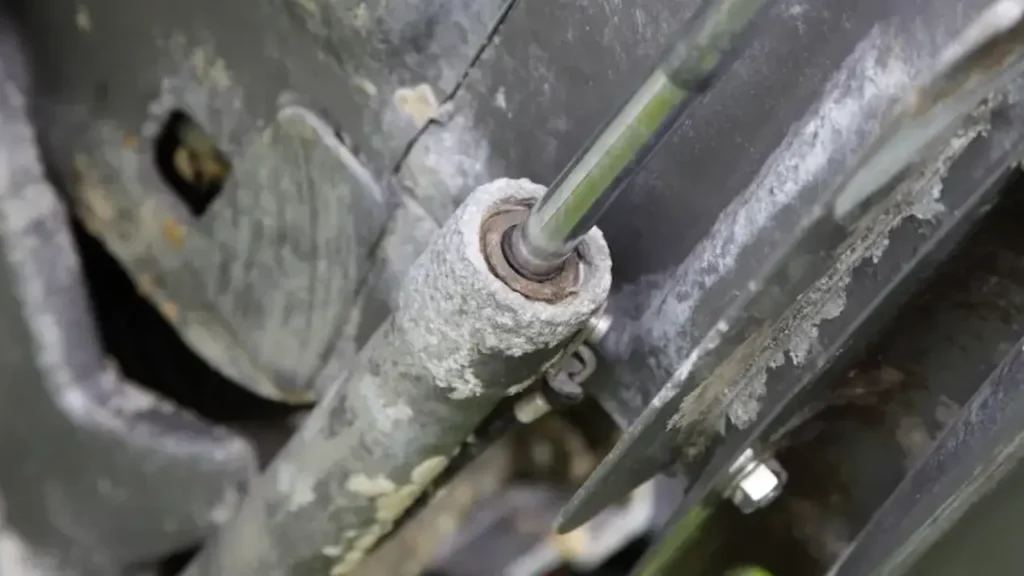
Temperature profoundly impacts hydraulic line pressure, primarily by influencing the viscosity of the hydraulic fluid. Viscosity is a fluid’s resistance to flow; as temperature changes, so does this resistance, directly affecting how easily fluid moves through the lines and consequently, the pressure required to achieve desired flow rates and perform work.
High Temperatures: When hydraulic fluid heats up, its viscosity decreases, meaning it becomes thinner and flows more easily. While this might seem beneficial for reducing resistance, excessive thinning can lead to:
- Increased Internal Leakage (Slippage): Thinner fluid can more easily bypass seals, internal clearances in pumps, valves, and cylinders, leading to a loss of efficiency and reduced power delivery to the cylinder. This means the pump has to work harder to maintain the desired pressure, potentially generating even more heat.
- Reduced Lubrication: Thinner fluid provides less lubrication between moving parts, increasing friction and wear on components like pumps, motors, and cylinder seals, which can lead to premature failure.
- Fluid Degradation: High temperatures accelerate the oxidation and breakdown of hydraulic fluid, forming sludge and varnish that can clog filters and valves, further impacting pressure and system performance.
- Hose and Seal Degradation: Extreme heat can cause the rubber and elastomer materials in hoses and seals to harden, crack, or become brittle, leading to leaks and pressure loss.
Low Temperatures: Conversely, when hydraulic fluid becomes cold, its viscosity increases, making it thicker and more resistant to flow. This can cause:
- Increased Pressure Drop: Thicker fluid requires more force to move through the hydraulic lines, leading to higher pressure drops across components and requiring the pump to generate more pressure to achieve the same flow.
- Sluggish Operation: The entire hydraulic system can become slow and unresponsive due to the increased resistance to fluid flow.
- Cavitation: At very low temperatures, the highly viscous fluid might not flow into the pump inlet fast enough, creating a vacuum that causes dissolved air in the fluid to form bubbles (cavitation). These bubbles collapse under pressure, damaging pump components and leading to noisy operation and reduced efficiency.
- Hose and Seal Brittleness: Cold temperatures can make hydraulic hoses and seals less flexible and brittle, increasing the risk of cracking, especially during startup or rapid movements, leading to leaks and pressure loss.
How to Release Pressure From a Hydraulic Hose

Releasing pressure from a hydraulic hose is crucial for safe maintenance and operation. Properly relieving stored hydraulic pressure prevents accidents, equipment damage, and fluid leaks. Following the correct procedure ensures that hoses, fittings, and machinery remain safe and functional while protecting operators from potential high-pressure hazards.
Step 1. Identify the Pressure Relief Valve:
- Visual inspection: Look for a valve with a pressure gauge or a lever or knob that can be adjusted. These are common indicators of a pressure relief valve.
- Consult documentation: Refer to the system’s operating manual or schematic for specific information on the valve’s location and function.
- Labeling: Pressure relief valves are often labeled or marked to indicate their purpose.
Step 2. Isolate the Hydraulic Hose:
- Valves and shutdowns: Locate and close the valves or shutdowns that control the flow of hydraulic fluid to the specific hose you want to work on. This can involve manual valves, solenoid valves, or other isolation devices.
- Multiple lines: If the hose is part of a complex system with multiple lines, you may need to isolate multiple valves to ensure complete isolation.
Step 3. Release Pressure:
- Open the valve: Carefully turn or adjust the pressure relief valve to its open position. This will allow excess pressure to be released.
- Monitor pressure: Use a pressure gauge connected to the system to monitor the pressure as it decreases. The gauge should gradually move towards zero.
- Release rate: The rate at which pressure is released may vary depending on the size of the relief valve and the amount of pressure in the system.
Step 4. Verify Pressure Release:
- Visual inspection: Check for any signs of leaks around the hose, fittings, or the pressure relief valve. If there are leaks, address them before proceeding.
- Test the hose: Gently flex or move the hose to ensure that there is no resistance. If the hose moves freely, it indicates that pressure has been released.
- Pressure gauge: Verify that the pressure gauge reads zero.
Step 5. Secure the Hydraulic Hose:
- Cap or plug: Once pressure has been released, cap or plug the hose ends to prevent hydraulic fluid from entering the system.
- Safety measures: Ensure that the caps or plugs are secure to avoid leaks or accidental reconnection.
Remember:
- Safety first: Always wear appropriate personal protective equipment and follow safety guidelines when working with hydraulic systems.
- Consult a professional: If you are unsure about any step or if the system is complex, consult a qualified technician or engineer.
- System-specific procedures: The specific procedures for releasing pressure may vary depending on the type of hydraulic system and the components involved.
- Documentation: Refer to the system’s documentation for any specific instructions or precautions.
Keep Away from Hydraulic Fluid Leaking
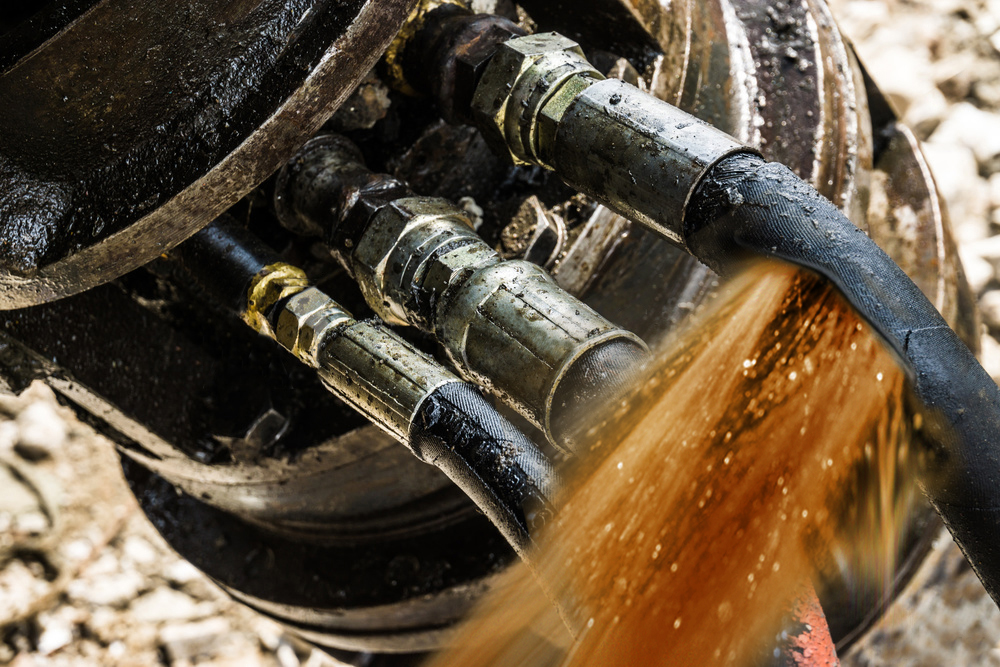
Hydraulic fluid leaks can be dangerous, causing injury, equipment damage, and environmental hazards. Understanding how to prevent and handle leaks is essential for safety and system efficiency. Proper precautions, maintenance, and protective measures help operators stay safe while maintaining reliable hydraulic system performance.
- Wear Protective Gear: Always use gloves, goggles, and protective clothing. We recommend personal protective equipment to shield operators from skin contact or eye exposure, reducing the risk of burns, irritation, or injury from high-pressure fluid leaks.
- Inspect Hoses Regularly: Frequent inspection detects wear or damage early. We encourage checking hoses for cracks, kinks, or loose fittings, preventing leaks before they become hazardous and maintaining system reliability.
- Proper Installation: Correctly install hoses and fittings to prevent leaks. We ensure tight connections, appropriate routing, and adherence to specifications, reducing stress and minimizing the chance of hydraulic fluid escaping during operation.
- Use Hydraulic Hose Guards: Protect hoses with spiral wraps or fire sleeves. We recommend these barriers to prevent abrasion, punctures, or accidental damage that could lead to leaks, extending hose lifespan and ensuring safer hydraulic operation.
- Immediate Response: Address leaks immediately if they occur. We advise shutting down the system, relieving pressure, and cleaning spills safely, reducing environmental impact, preventing injuries, and maintaining hydraulic system integrity.
Hydraulic Hose Quick Release Couplings
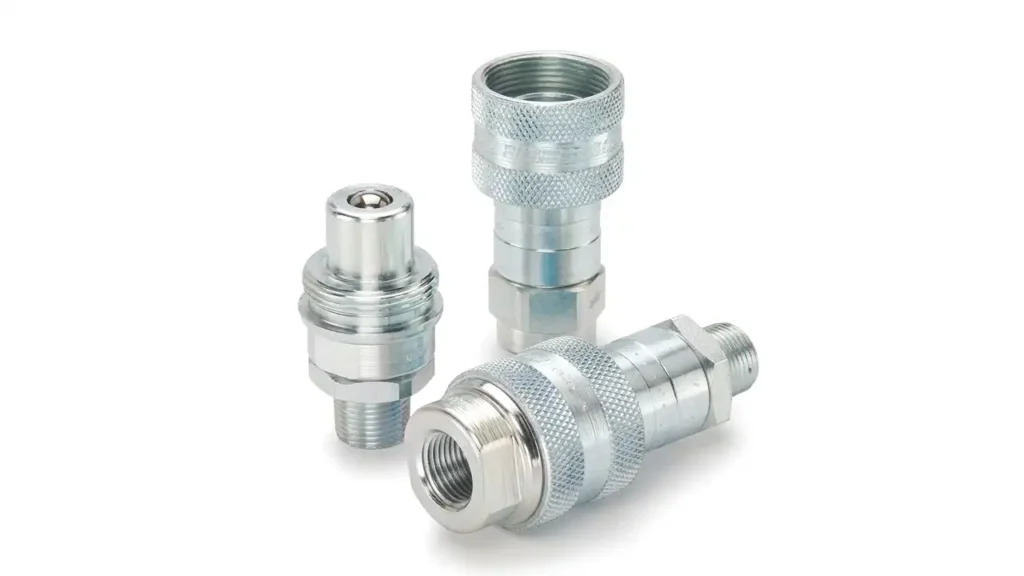
Hydraulic hose quick release couplings are specialized connectors that allow for rapid and efficient disconnection and reconnection of hydraulic hoses. They are designed to provide a secure and leak-free connection while minimizing downtime and reducing the risk of operator injury.
Key Features and Benefits:
- Rapid Connection and Disconnection: Quick release couplings offer a simple and time-saving solution for connecting and disconnecting hydraulic hoses. With a single action, operators can quickly establish or break the hydraulic connection.
- Secure and Leak-Free Connections: These couplings are designed to provide a reliable and leak-free seal, preventing hydraulic fluid from escaping and ensuring the safety of operators and equipment.
- Versatility: Quick release couplings are available in various sizes and configurations to accommodate different hose diameters and hydraulic system requirements.
- Improved Efficiency: By reducing the time required for hose connections, quick release couplings can improve overall system efficiency and productivity.
- Operator Safety: These couplings can help to reduce the risk of operator injury by eliminating the need for manual wrenching or other tools to tighten or loosen connections.
Common Types of Hydraulic Hose Quick Release Couplings:
- Push-Pull Couplings: These couplings feature a simple push-pull mechanism for connecting and disconnecting. They are easy to use and widely available.
- Lever-Release Couplings: Lever-release couplings require a lever to be pulled or pushed to connect or disconnect the hoses. They often offer a more secure connection than push-pull couplings.
- Automatic Couplings: These couplings automatically connect or disconnect when the hoses are brought together. They are particularly useful in applications where frequent connections and disconnections are required.
Applications of Hydraulic Hose Quick Release Couplings:
- Construction and Heavy Equipment: Quick release couplings are commonly used in construction and heavy equipment applications to quickly connect and disconnect hydraulic tools and attachments.
- Industrial Machinery: They are also used in various industrial machinery to facilitate maintenance, repairs, and system reconfigurations.
- Agricultural Equipment: Quick release couplings can improve the efficiency of agricultural equipment by allowing for rapid attachment and detachment of implements.
- Mobile Hydraulic Systems: These couplings are ideal for mobile hydraulic systems, such as those found in trucks, trailers, and construction vehicles.
By incorporating hydraulic hose quick release couplings into your system, you can enhance efficiency, improve safety, and reduce downtime.
Quick Release Hydraulic Hose Fittings
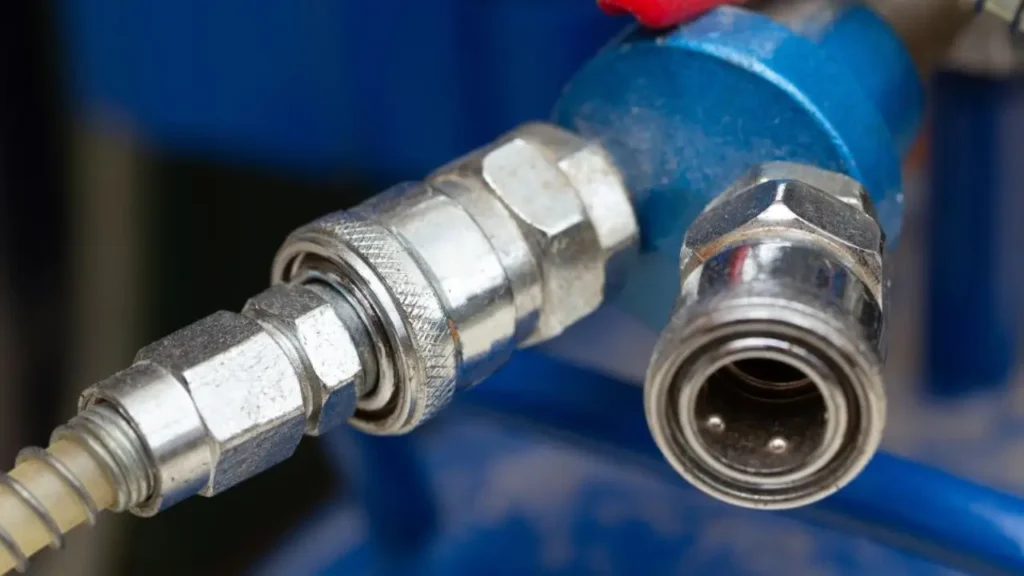
Quick release hydraulic hose fittings are specialized connectors that allow for rapid and efficient disconnection and reconnection of hydraulic hoses. They are designed to provide a secure and leak-free connection while minimizing downtime and reducing the risk of operator injury.
Key Features and Benefits:
- Rapid Connection and Disconnection: Quick release fittings offer a simple and time-saving solution for connecting and disconnecting hydraulic hoses. With a single action, operators can quickly establish or break the hydraulic connection.
- Secure and Leak-Free Connections: These fittings are designed to provide a reliable and leak-free seal, preventing hydraulic fluid from escaping and ensuring the safety of operators and equipment.
- Versatility: Quick release fittings are available in various sizes and configurations to accommodate different hose diameters and hydraulic system requirements.
- Improved Efficiency: By reducing the time required for hose connections, quick release fittings can improve overall system efficiency and productivity.
- Operator Safety: These fittings can help to reduce the risk of operator injury by eliminating the need for manual wrenching or other tools to tighten or loosen connections.
Common Types of Quick Release Hydraulic Hose Fittings:
- Push-Pull Fittings: These fittings feature a simple push-pull mechanism for connecting and disconnecting. They are easy to use and widely available.
- Lever-Release Fittings: Lever-release fittings require a lever to be pulled or pushed to connect or disconnect the hoses. They often offer a more secure connection than push-pull fittings.
- Automatic Fittings: These fittings automatically connect or disconnect when the hoses are brought together. They are particularly useful in applications where frequent connections and disconnections are required.
Applications of Quick Release Hydraulic Hose Fittings:
- Construction and Heavy Equipment: Quick release fittings are commonly used in construction and heavy equipment applications to quickly connect and disconnect hydraulic tools and attachments.
- Industrial Machinery: They are also used in various industrial machinery to facilitate maintenance, repairs, and system reconfigurations.
- Agricultural Equipment: Quick release fittings can improve the efficiency of agricultural equipment by allowing for rapid attachment and detachment of implements.
- Mobile Hydraulic Systems: These fittings are ideal for mobile hydraulic systems, such as those found in trucks, trailers, and construction vehicles.
By incorporating quick release hydraulic hose fittings into your system, you can enhance efficiency, improve safety, and reduce downtime.
Conclusion
Relieving pressure on hydraulic hoses is a fundamental safety practice. Proper pressure management prevents leaks, equipment failure, and potential injuries. Following the correct procedures ensures hoses and hydraulic components function efficiently, reducing downtime and maintaining smooth operation across construction, industrial, and agricultural applications.
Understanding and applying safe pressure relief techniques improves maintenance efficiency. Technicians can inspect, replace, or repair hoses without risk of high-pressure accidents. Adhering to these practices extends the service life of hoses and fittings while keeping hydraulic systems reliable and safe for daily operations.
For businesses seeking dependable hydraulic solutions, Kingdaflex provides wholesale hydraulic hoses and accessories. Our products meet diverse industry requirements, offering durable construction, reliable performance, and compatibility with various hydraulic systems. Partnering with Kingdaflex ensures efficient, safe, and long-lasting operation of your hydraulic equipment.


